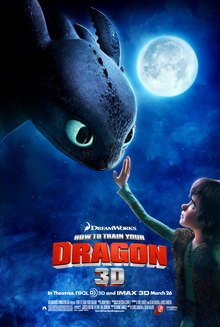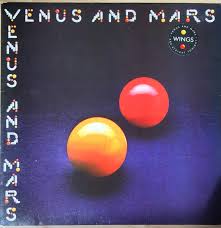How to Train Your Dragon is the best movie ever, actually

The greatest masterpiece ever displayed on a screen © Paramount Pictures
You might think I’m exaggerating when I say that the 2010 children’s movie “How to Train Your Dragon” is the best film ever, but by the end of this article I need you to understand that not only am I entirely and completely serious with this statement, I am also correct.
“How To Train Your Dragon” is a movie in which a Viking teenager named Hiccup defies and changes the expectations of his clan by befriending and training a dragon rather than killing it. Over the course of the film, he gathers information about dragons and works to help out his injured companion, Toothless. In the end, he saves the day and wins over his community to the side of not killing dragons.
First, let’s talk about the superb animation. It’s a movie from twelve years ago, but the environments are beautifully detailed and completely alive. Each one leaves a distinct impression of a real location. There are also quite a few of these settings for how detailed they are.
The character designs are also awesome. They recognized the dangers of creepiness in realistic animation (or the ‘uncanny valley’) and went cartoonish enough to avoid it while still keeping human features. Hiccup may have an eminently punchable face, but that really just means the designers did their jobs in portraying a character who acts very punchably.
Another amazing aspect of this film is the music. Aside from John Powell’s masterful composition, the whole score ties into the story more than might happen in your average blockbuster. A particular instance of this thematic cohesion is the track “Test Drive,” which plays when Hiccup first puts on Toothless’ prosthetic tail fin and takes to the sky.
At first, Toothless’ theme plays as Hiccup struggles to keep up with properly adjusting their flight pattern, but as he grows more confident and the two become more synchronized, Hiccup’s theme mixes in and they play simultaneously. This might seem like a simple thing to do, but not many movies do it despite how good it is at getting the audience to feel things.
Another great element of this movie is its symbolism. You might remember that at the end of the movie, Hiccup loses the lower part of his left leg while defeating the queen of the dragons’ nest. This is also fairly simple, but the symbolic comparison between Hiccup’s left leg and Toothless’ left tail fin is established masterfully without the viewer even noticing on the first watch.
Early in the movie, we see Hiccup’s mentor figure, Gobber, regale the dragon trainees about how his right arm and left leg were eaten by dragons. One of the trainees, Snotlout, promises to avenge him by eating the legs of every dragon he kills from this point on. However, as Gobber says, it’s the wings and tail you should really be taking off if you want to incapacitate a dragon. This sets up a parallel between human legs and dragon tails way before the movie actually gives payoff on this symbol of the bond between human and dragon, and it doesn’t even tell you that’s what it’s doing.
That brings me to another strong suit of this film. Although I can’t cite any specific examples, I’ve noticed a trend in the movies I’ve seen that have come out recently towards babying the audience. This might sound elitist, but I don’t think viewers of cinema or television need to be told directly the messages or themes of what they’re watching.
Often, directors will fill run time in movies with dialogue that doesn’t work to develop their characters, flesh out their world, or enhance the story in any meaningful way. I have nothing against this in principle, but one tires of vapid quips. Looking at you, Marvel. Dreamworks movies in general can be a good departure from this trend, but “How to Train Your Dragon” especially wastes no screen time.
Now, I may or may not have lied to you at the beginning of this article. I said I wanted you to believe that I was correct in saying that “How to Train Your Dragon” is the best movie ever. I don’t actually want that. There are obviously a lot of different movies that are very good at a lot of different things, and no one film can beat all of them in every category. Sure, this might be considered clickbait, but I think I’m justified.
It doesn’t seem to me like very many people would read an article that was touting some mild take about a children’s movie you vaguely remember being pretty good. Generally, people don’t consider movies whose intended audience are children to be as worthwhile as those targeted towards adults, so my statement at the start of the article was probably pretty inflammatory.
My real message here is that any work of art is worthy of consideration as art, regardless of who it’s sold to. As such, as a piece of art, “How to Train Your Dragon” gets 5 out of 5 Spartan heads from me.
Your donation will support the student journalists of Fargo North High School. Your contribution will allow us to resume physical printing of our newspaper for students at Fargo North!





Nadia • Jul 6, 2024 at 4:46 pm
Please, you’re so right man. Thank you for this article because I also think that this movie (all parts, one, second and third) is one or the best film that was ever made. I’m 15 but I think it doesn’t matter because I’m believing that even when I’ll be 20 I’ll still love this movie the same way.
(This comment is without a sword)